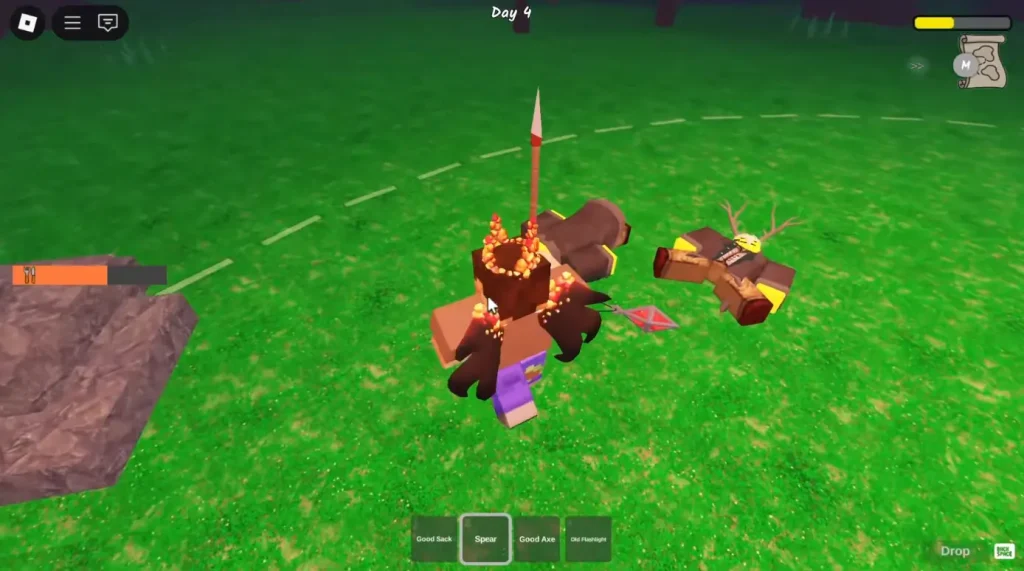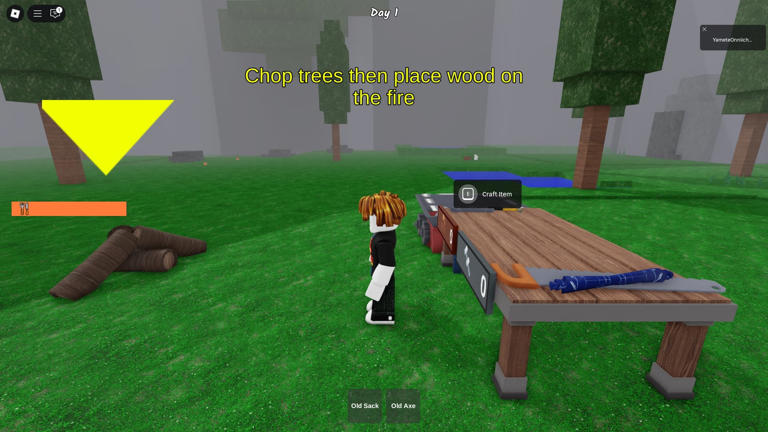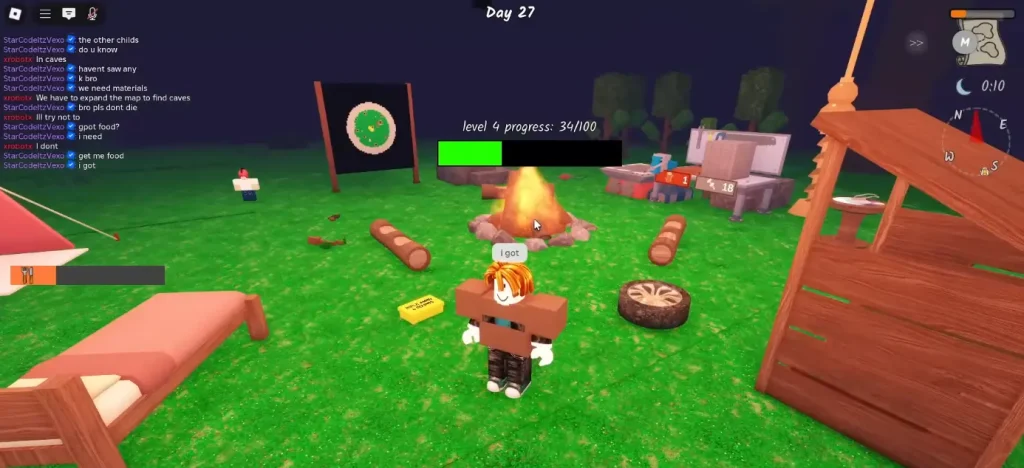Popular Now
Roblox 99 Nights in the Forest stands out from other wave-based survival games because it merges combat challenges with an unforgiving survival resource system. Players are not only battling waves of enemies every night but also struggling to maintain their health, hunger, stamina, and equipment in a hostile forest. The constant balance between fighting and managing resources forms the core challenge of the game. Unlike games where resources are abundant, 99 Nights in the Forest intentionally creates scarcity to force tough decisions. This article will focus exclusively on the Survival Resource Management System, exploring how it evolves across the nights, what mechanics drive player choices, and how mastery of these systems separates casual players from true veterans.
The First Nights: Establishing a Resource Base
In the first ten nights, the main challenge is establishing a consistent source of food, materials, and basic shelter. Early-game enemies are manageable, which allows players to focus on learning the layout of the forest and identifying high-yield resource nodes.

Players quickly realize that the map’s geography matters — food sources may be far from safe zones, forcing strategic time management. Inexperienced players often make the mistake of over-collecting low-value items, filling inventory space and wasting time. The first stage teaches efficiency over abundance: collecting the right items in the right amounts.
Weapon Durability and Maintenance
Weapon durability is a hidden yet critical aspect of resource management. Every swing, block, or shot slowly wears down your gear. Early on, this might seem like a minor inconvenience, but by Night 15, a broken weapon in the middle of a fight can spell disaster.
Maintaining weapons requires materials that are also used for crafting traps and shelter upgrades. This creates a tension point — do you invest resources in keeping your weapon at peak condition, or do you risk running it into the red to save materials for defensive structures? Experienced players develop a rhythm for repairs, often timing maintenance right before major waves to avoid being caught off guard.
Hunger and Stamina Balance
The game’s hunger system is more than a passive timer. Hunger affects stamina regeneration, which in turn affects combat performance and travel speed. Ignoring hunger doesn’t just put your character at risk of starvation — it makes every action less effective.

In the mid-game, enemies become faster and more aggressive, meaning low stamina can prevent you from dodging or chasing down foes. Skilled players keep a rotation of food types with different effects, such as quick-stamina snacks for combat and slow-burn meals for long-term exploration.
The Mid-Game Shift: Scarcity and Enemy Pressure
By Nights 20 to 40, the game introduces heavier enemy pressure. This is when resource collection becomes significantly more dangerous, as players must forage farther from safety while avoiding ambushes.
Enemies also begin targeting resource nodes, forcing players to defend not only themselves but their supply routes. This creates an emergent gameplay loop where teams split into gatherers and defenders, with communication becoming vital. In solo play, the risk intensifies, and route optimization becomes essential for survival.
Environmental Hazards and Seasonal Changes
One of the standout features of 99 Nights in the Forest is its simulated seasonal cycle. Temperatures drop during certain nights, causing increased hunger drain and reducing mobility unless players craft warm clothing.

These environmental shifts force a complete re-prioritization of resources. Suddenly, fiber and fur become more valuable than wood or stone, and failure to adapt to the season’s needs can lead to rapid defeat. Players who hoard essential materials during plentiful times are rewarded, while those who operate on short-term survival may find themselves unprepared.
Advanced Crafting and Resource Investment
In the later stages, crafting shifts from survival basics to advanced gear and fortified defenses. Crafting higher-tier weapons and armor often requires rare materials located in enemy-heavy zones.
This is where investment strategy comes into play. Building an advanced bow may give a significant damage boost, but the same materials could create defensive traps that reduce enemy numbers each night. The best teams coordinate investments, ensuring that both offensive and defensive needs are met.
Trading and Resource Sharing in Co-Op
In multiplayer, resource management gains a social dimension. Players can trade materials, specialize in certain roles, or pool resources for large projects. Successful groups often designate gatherers, defenders, and crafters to maximize efficiency.

However, trading also introduces potential conflict. Disagreements over resource allocation can cause tension, and a poorly timed selfish decision can jeopardize the entire team. This adds an unspoken diplomacy layer to survival, especially in public matches.
Endgame Resource Crisis
From Night 70 onwards, resource scarcity reaches its peak. Common nodes may be depleted entirely, forcing players to travel deeper into enemy territory. At this stage, risk-versus-reward decision-making becomes critical.
Veterans prepare for this by stockpiling rare resources well before they’re needed. Those who failed to plan often resort to desperate raids into dangerous zones, where the chance of returning alive is slim. This final stretch tests not only mechanical skill but also long-term planning discipline.
Optimizing Resource Routes and Efficiency
Efficient resource gathering is a skill in itself. Players who understand the forest’s layout can chain collection routes, hitting high-yield nodes in quick succession while minimizing exposure to enemies.
Advanced strategies involve timing these runs during low-threat windows, such as right after a wave when the map temporarily quiets. Others use stealth to slip past enemies, sacrificing speed for safety. This logistical mastery often determines who survives the final nights.
Conclusion
Survival in Roblox 99 Nights in the Forest isn’t just about fighting enemies — it’s about mastering the delicate balance of resource acquisition, maintenance, and allocation under constant threat. The game’s Survival Resource Management System forces players to think several nights ahead, adapt to environmental changes, and make tough choices about how to spend limited supplies. Those who succeed aren’t necessarily the strongest fighters, but the most strategic planners who can keep themselves and their team supplied until the very last night.


















